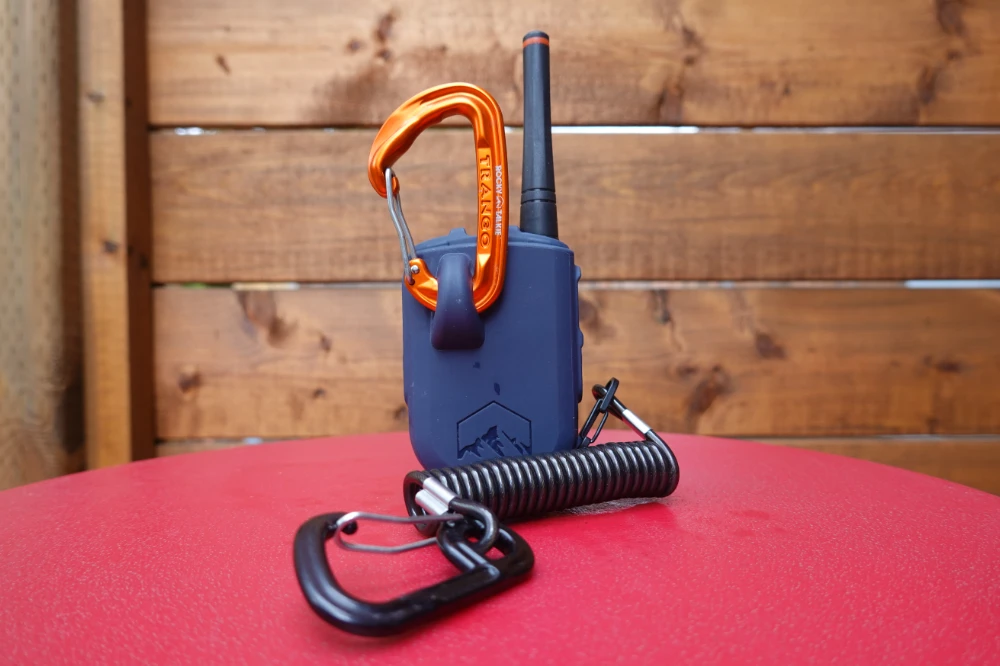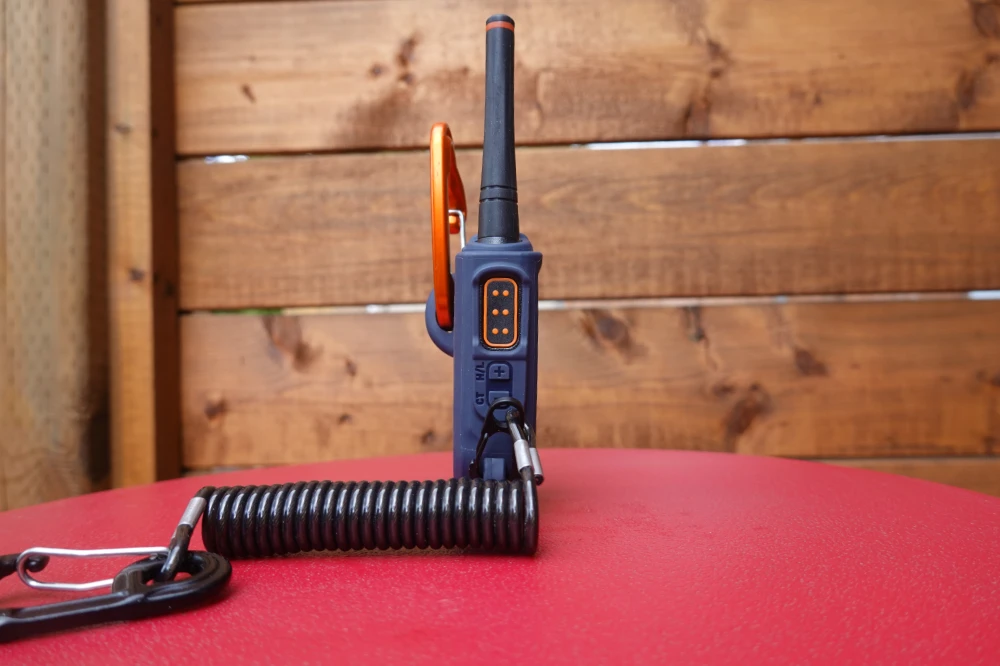Rocky Talkie Mountain Radio - A durable, highly functional FRS radio
-

Rocky Talkie Mountain Radio
One of the biggest unspoken challenges when climbing multi-pitch routes is communication. Factors like wind noise, longer pitches (sometimes up to 70m), and wandering lines make it difficult to stay in touch with your climbing partner. In the past, climbers would use an elaborate communication system consisting of various tugs on the rope to signal when they were off belay, etc. As you can imagine, this system was less than ideal, and climbers would eventually end up shouting at each other in an effort to determine whether they were climbing, trying to clip, or setting up a belay.
This vexing situation seemed to end with the arrival of compact and affordable FRS walkie-talkies. Unfortunately, while these radios allowed for some level of communication, they were not optimized for use in climbing situations. Realizing that these units had limitations, Rocky Talkie created the Mountain Radio.
This vexing situation seemed to end with the arrival of compact and affordable FRS walkie-talkies. Unfortunately, while these radios allowed for some level of communication, they were not optimized for use in climbing situations. Realizing that these units had limitations, Rocky Talkie created the Mountain Radio.
-

Rocky Talkie Mountain Radio
So, what makes the Rocky Talkie Mountain Radio particularly suitable for climbing? Glad you asked. Let’s start with the obvious, and by obvious, I mean the clip-in point that is moulded into the body. On the back of the Mountain Radio is a small climbing-spec carabiner from Trango that allows you to clip the device to a pack shoulder strap or waist-belt gear loop as well as a climbing harness gear loop. This seemingly simple mod ensures the radio is always easily accessible and eliminates the fumbling (and risk of dropping) associated with fishing a radio out of a pack or jacket pocket. Rocky Talkie has also added a lightweight, extendable leash that prevents accidentally dropping the radio if your hands are cold or wet. It’s worth noting that both the leash and clip-in carabiner can be removed if you prefer to carry the radio in your pocket or are simply looking to shave grams. While on the surface, these design tweaks may seem insignificant, anyone who has tried to jerry-rig a similar system will appreciate the flap-free security of the Rocky Talkie.
-

Rocky Talkie Mountain Radio
From here, let’s examine some of the radio’s other useful features. The body, for instance, is encased in a grippy thermoplastic covering that provides secure handling as well as protection against the inevitable bumps that occur when climbing. It should also be noted that the radio has a shatterproof LED screen, which should help it survive any unexpected impacts. The operating buttons are similarly well-conceived; nestled slightly below the surface, they are unlikely to be accidentally activated, which is not only irritating but also drains battery power. Speaking of power, the Mountain Radio uses a unique lithium-ion battery that provides multiple days of battery life even in sub-zero conditions. Other notable specs include a claimed maximum range of 50 km, but Rocky Talkie wisely points out that 2 to 8 km is the more realistic distance in real-world conditions. Finally, the radio has two built-in power modes (high and low) that allow climbers to choose between maximum transmission range or extended battery life.
Ok, with that out of the way, the next big question is whether the Mountain Radio is worth the price. After all, a pair of Mountain Radios clock in at a significantly higher price tag than your conventional department-store FRS offerings. Well, if you want durable, highly functional radios with exceptional battery life that operate flawlessly in challenging climbing and backcountry situations, the answer is a resounding yes. Spend the extra cash – the Mountain Radios are worth it.
You can find out more about the Rocky Talkie Mountain Radio at rockytalkie.com.
Join the discussion of this and other climbing-related stories at www.ontarioclimbing.com/forum/
Join the discussion of this and other climbing-related stories at www.ontarioclimbing.com/forum/





